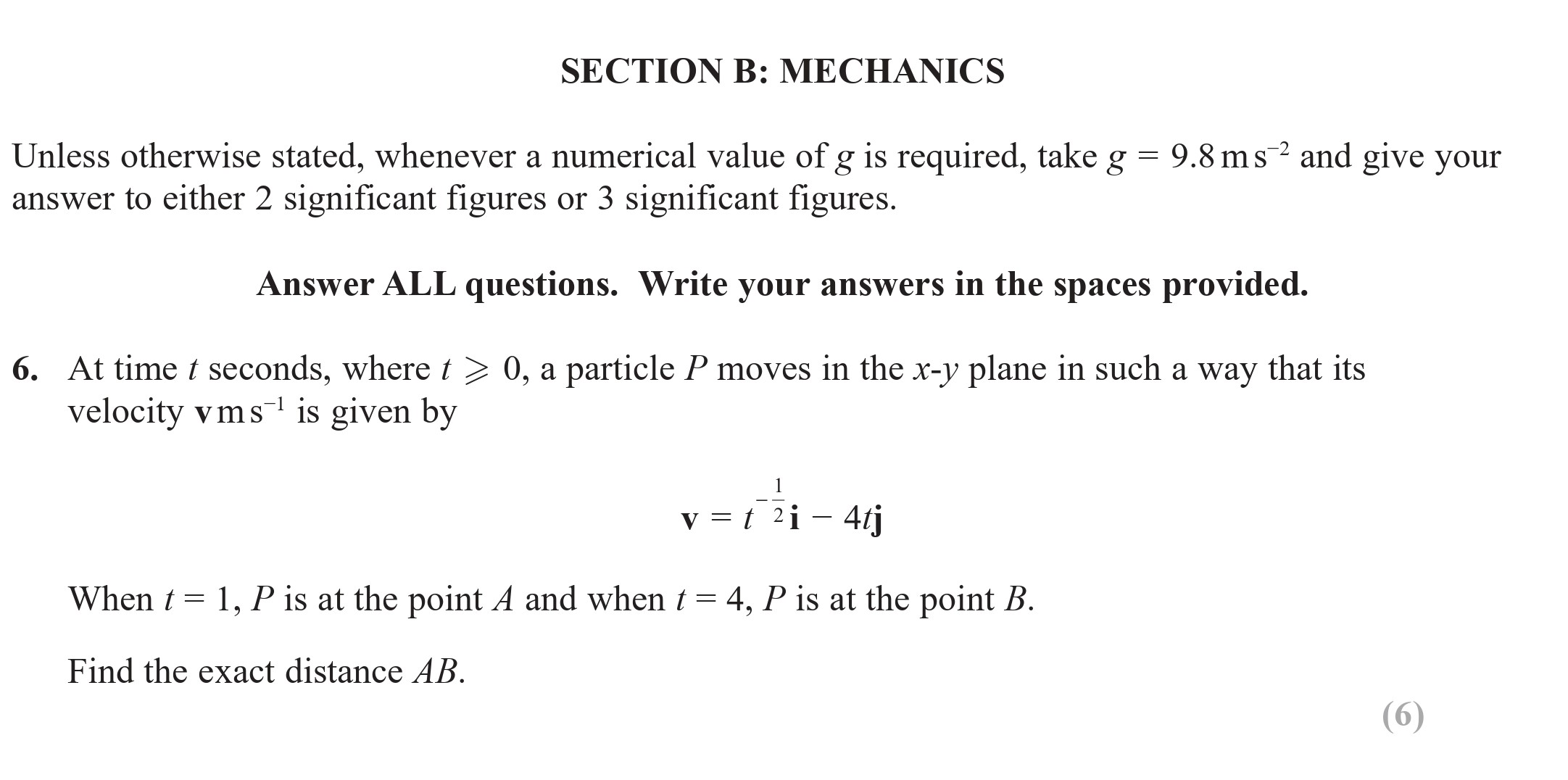Photo AI
6. At time t seconds, where t > 0, a particle P moves in the x-y plane in such a way that its velocity v ms⁻¹ is given by $$ extbf{v} = t^2 extbf{i} - 4 extbf{j}$$ - Edexcel - A-Level Maths Mechanics - Question 6 - 2018 - Paper 1
Question 6

6. At time t seconds, where t > 0, a particle P moves in the x-y plane in such a way that its velocity v ms⁻¹ is given by $$ extbf{v} = t^2 extbf{i} - 4 extbf{j}$... show full transcript
Worked Solution & Example Answer:6. At time t seconds, where t > 0, a particle P moves in the x-y plane in such a way that its velocity v ms⁻¹ is given by $$ extbf{v} = t^2 extbf{i} - 4 extbf{j}$$ - Edexcel - A-Level Maths Mechanics - Question 6 - 2018 - Paper 1
Step 1
Step 3
